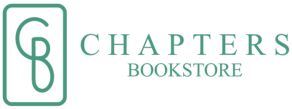Eighteen years have passed since ten countries from Central & Eastern Europe joined the European Union and more than three decades since the Berlin Wall was torn down in 1989 - but ignorance about what is popularly still called Eastern Europe is as widespread as ever. Slovenia still gets mixed up with Slovakia, the Slavs remain a mystery in a Europe apparently dominated by Romanic and Germanic nations and a country like the Czech Republic is labelled as Eastern European, although one needs to travel west to get from Vienna to Prague.
First published in 2009 under the title What's so eastern about Eastern Europe?, this book is much more than a revised and updated version of the first edition. Its presentation of the political and cultural history of Central, Eastern and South-Eastern Europe, written in an accessible language is now complemented with recent developments in the region. The new edition digs into the reasons behind the illiberal turn in Poland, Hungary and elsewhere, putting the alleged democratic backslide into the wider context of European populism. Leon Marc offers a new and fresh perspective in explaining the roots of populism and social conservativism in the region, which the book sees in a mixture of historical factors, economic conditions, the heavy burden of Communist legacy, as well as a reaction to contemporary social developments in the West. Drawing on a wide range of literature, the book calls for more sensibility to these underlying causes, critical examination of the true European values, and for a coalition of defenders of Humanism and Judeo-Christian tradition as key pillars of its identity, in order to save Europe and its liberal democracy.
This updated and expanded edition contains a brand new chapter bringing this book up to date with recent events, including Covid-19 and the Ukrainian conflict.
- Publisher Name:Oldcastle Books Ltd
- Product Format:Paperback
- ISBN: 9780857305510
- Author:Marc, Leon
- Publication Date:2023-02-21
If you are not satisfied with your order in any way, get in touch. We have an excellent customer service record and we will do our best to ensure you are pleased with your purchase.
We are happy to refund a product if it is defective, within 30 days of purchase upon the return of your product. If you return a product to us and request a refund due to an error on our part we will be happy to pay for the postage cost to return it to us.
To be eligible for a return, your item must be in the same condition that you received it, unworn or unused & unread, and in its original packaging. You’ll also need the receipt or proof of purchase.
Please note, if you are requesting a refund based on an issue with condition we kindly ask you to provide a photo in order for us to best advise a suitable resolution.
To start a return, you can contact us at shop@chaptersbookstore.com. If your return is accepted, we’ll send you a return shipping label, as well as instructions on how and where to send your package. Items sent back to us without first requesting a return will not be accepted.
You can always contact us for any return question at shop@chaptersbookstore.com.
Damages and issues
Please inspect your order upon reception and contact us immediately if the item is defective, damaged or if you receive the wrong item, so that we can evaluate the issue and make it right.
Exceptions / non-returnable items
Certain types of items cannot be returned, like custom products or special orders. Unfortunately, we cannot accept returns on sale items or gift cards.
Exchanges
The fastest way to ensure you get what you want is to return the item you have, and once the return is accepted, make a separate purchase for the new item.
Refunds
We will notify you once we’ve received and inspected your return, and let you know if the refund was approved or not. If approved, you’ll be automatically refunded on your original payment method. Please remember it can take some time for your bank or credit card company to process and post the refund too.
Free Delivery in the Republic Of Ireland on all orders over €30. Standard Delivery Charge in Republic of Ireland of €5 for all orders below €30.
Delivery is subject to warehouse availability. Out-of-stock items will be shipped as soon as possible, upon arrival from the manufacturer/publisher. Please take shipping time into consideration.




![Collins, Suzanne PREORDER TEEN FICTION New Suzanne Collins: Hunger Games Deluxe Collection (4 Book Set) [2023] hardback](http://chaptersbookstore.com/cdn/shop/files/collins-suzanne-suzanne-collins-hunger-games-deluxe-collection-4-book-set-2023-hardback-9780702333026-54204835725651_{width}x.png?v=1706354057)

![Matthew, Perry BARGAIN FILM Matthew Perry: Friends, Lovers and the Big Terrible Thing: 'A candid, darkly funny book' New York Times [2022] paperback](http://chaptersbookstore.com/cdn/shop/files/matthew-perry-matthew-perry-friends-lovers-and-the-big-terrible-thing-a-candid-darkly-funny-book-new-york-times-2022-paperback-58541711753555_{width}x.jpg?v=1726942813)
